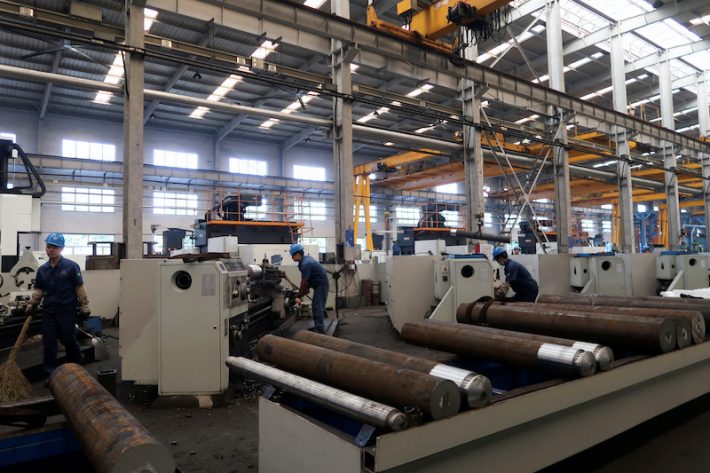China’s factory activity grew marginally last month, with a pick-up in production after policymakers announced a slew of stimulus measures in late September.
The Caixin/S&P Global manufacturing PMI – a private sector survey – rose to 50.3 in October from 49.3 the previous month, signalling an improvement in the sector at the start of the final quarter, according to data released on Friday.
The reading echoes an official survey on Thursday, which showed manufacturing activity expanded for the first time since April, a stabilising sign as Beijing seeks to push economic growth back towards this year’s target of roughly 5%.
ALSO SEE: China Researchers Made AI Tool For Military Use Via Meta’s Model
Markets are awaiting more details on China’s extra debt to revive the fragile economy as a persistent property market downturn and record-low consumer confidence continue to drag on the recovery of the world’s second-biggest economy.
On Tuesday Reuters reported that the government will next week consider approving new debt issuance of more than 10 trillion yuan ($1.4 trillion) in the coming years.
According to the Caixin survey, incoming new orders placed with Chinese manufacturers increased at the quickest pace in four months. That also pushed production expansion to the quickest pace since June.
Manufacturers’ confidence about future output improved as their optimism levels climbed from September’s low to the highest level in five months.
Steel sector undergoing changes
This week’s data showed that the steel sector has suffered a major slowdown, given the long-running real estate crisis, incurring losses of about 35 billion yuan ($5 billion) in the first three quarters of this year. That may help reduce emissions, although critics say it is just part of the country’s overcapacity and that domestic electricity consumption is still rising.
China has set up a state entity to bolster recycling of steel scrap, plus batteries and plastics. The China Daily has suggested the company would recycle 260 million tonnes of scrap steel and iron annually.
The Ministry of Industry and Information Technology also set a goal for recycling 62% of “bulk industrial solid waste” by 2030, with 20% of “short-process steelmaking” relying on recycling, a report by state-run CCTV said.
Over 140 steel enterprises are said to have completed “ultra-low emission retrofitting” in the first eight months of this year, according to the China Iron and Steel Association (CISA), Carbon Brief reported, citing the CCTV report.
It said CISA had set new standards for “low-carbon emission steel” and said that deployment of “high-grade steel materials” could cut carbon dioxide emissions by 1.35 billion tonnes by 2030.
But new export orders still falling
Meanwhile, purchasing activity rose in response to the uptick in new work, which led to accumulation of stocks of purchases. Manufacturers indicated that post-production inventory rose amid delays in outbound shipments and with higher production.
Both input and output prices rose slightly in October.
However, new export orders contracted for a third straight month, albeit less sharply than the prior month.
Investors are worried that a victory by Republican candidate Donald Trump in the US presidential election next week and an escalation of tariffs against Chinese products may dent Chinese exports – a lone bright spot this year.
Even if work inflows improved, the rate of job losses at factories was the fastest since May 2023. Anecdotal evidence showed companies reduced temporary workers and refrained from replacing job leavers in October.
“The labour market remains under pressure, and price levels are still subdued,” said Wang Zhe, senior economist at Caixin Insight Group.
“Additionally, achieving China’s 2024 growth target will depend on a sustained recovery in consumer demand. That means policy efforts should focus on increasing household disposable income more effectively.”
- Reuters with additional input (on the steel sector) and editing by Jim Pollard
ALSO SEE:
Asian Economies at Risk From Inaction on Climate Change: ADB
China ‘May Issue $1.4 Trillion in Extra Debt Over a Few Years’
China Tells BYD, Geely ‘Stop EU Investments’ As Tariffs Start
China Tightening Grip on Critical Minerals For Chips – NYT
Algae Strain Could Sequester Carbon From Oceans, Factories – WI
Satellite Finds Methane, CO2 Plumes Over Sites in Asia, Africa, US
























